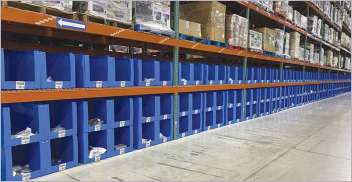Coming off of an all-time monthly high for United States-bound waterborne shipments in July, August levels, while still strong, were down slightly, according to data recently issued by global trade intelligent firm Panjiva.
August shipments, at 1,084,726, were down 1.4% compared to July’s 1,096,835 and were up 1.4% annually. All months in 2018 have seen growth, with the exception of a 0.2% decline in March, which was the first one going back to a 7.7% annual drop-off in February 2017. On a year-to-date basis through August, shipments are up 5.2% annually at 8,065,607.
Panjiva explained in a research note that the Trump administration’s widening application of tariffs began to have a significant effect on imports in August, indicating that the “peak” of Peak Season has already passed.
“The basic message is that Trump’s tariffs likely led to accelerated shipments in July instead of August and we may therefore have seen the peak of the year already,” said Chris Rogers, Panjiva research director.
What’s more the 1.4% annual gain in August is down considerably compared to the average increase of 6.9% over the previous three months. And it also noted that the sequential July to August decline marks the first time that has happened since 2013 and is only the third time it has occurred in the past 11 years.
The tariff-influenced pull ahead is likely to appear in September’s data, too, said Panjiva with the full month impact of the existing tariffs taking effect, coupled with a race to beat duties on a further $200 million of products expected to be underway.
“The tariff-related pull-ahead is something we had been waiting to see for some time,” said Rogers. “When thinking about the entire kind of tariff threat package promised by President Trump on $250 billion worth of products, which is half of all Chinese exports to America, only $50 billion of that was in place in August,” he said. “That is likely to accelerate in September, but we will need to see what is offered up in additional tariffs beyond that. It is a difficult balancing act at the moment.”
Rogers noted that there is a material impact on the items that face tariffs once they take hold, with the products affected by tariffs off 13% in August.
A big caveat for September shipments, he said, is that the numbers will be impacted as a result of Hurricane Florence having hit the U.S. and impacting operations at the Port of Charleston and the Port of Virginia.
“This could affect nearly 8% of U.S. inbound shipments,” Rogers said. “It creates extra uncertainty.”
Looking at fundamentals that have been driving import activity in recent years, Rogers said some remain fully in place, including consumer confidence, positive business sentiment, and the ISM import and export data still in positive territory.
“Without the tariffs, we would be expecting a strong finish to the year,” he said. “If Americans want to buy stuff and cannot buy from China because it is too expensive, they will buy goods from somewhere else like Vietnam or Malaysia, or Europe or in the U.S. At the end of the day, tariffs are a form of tax. It is likely to have a global impact on supply chains eventually.”







